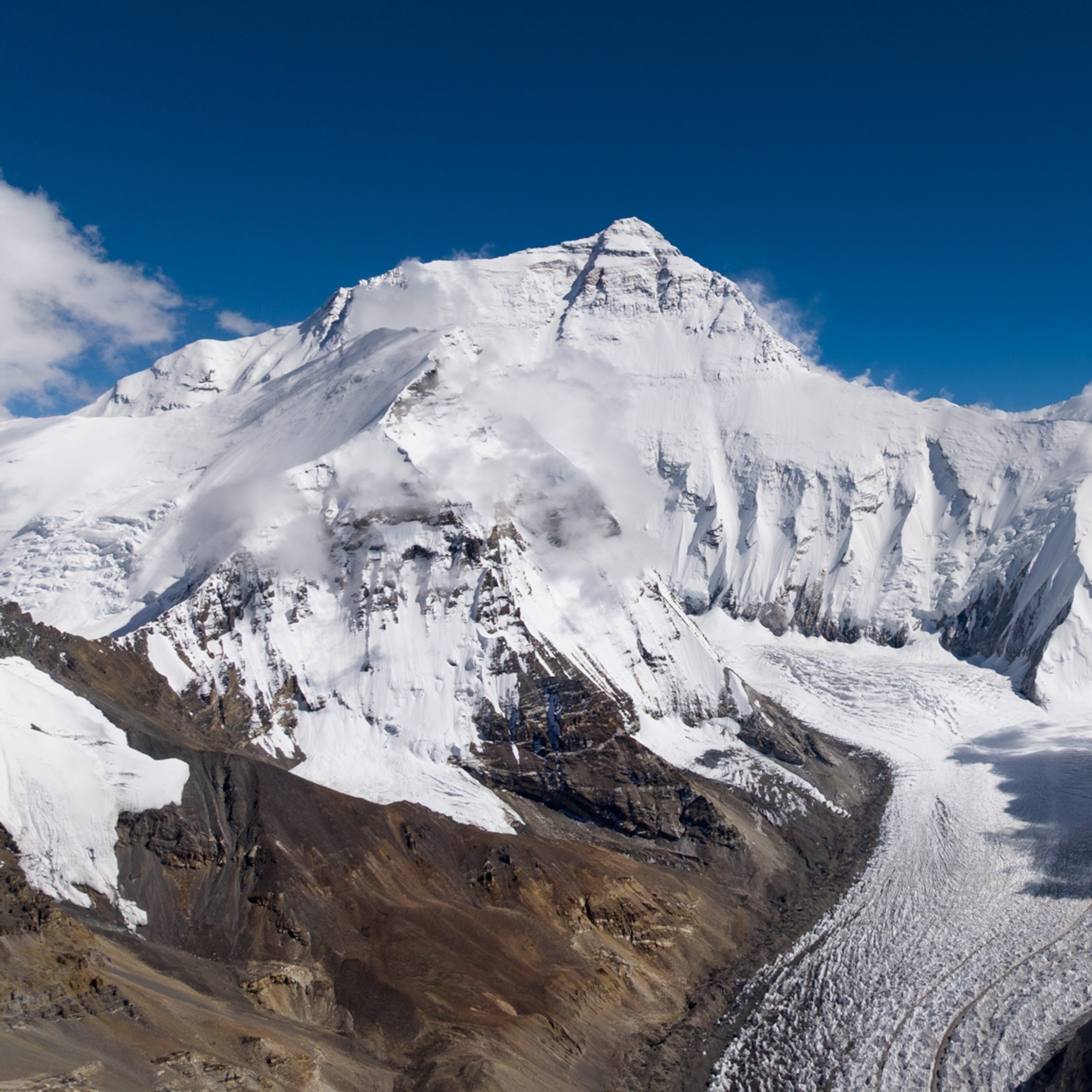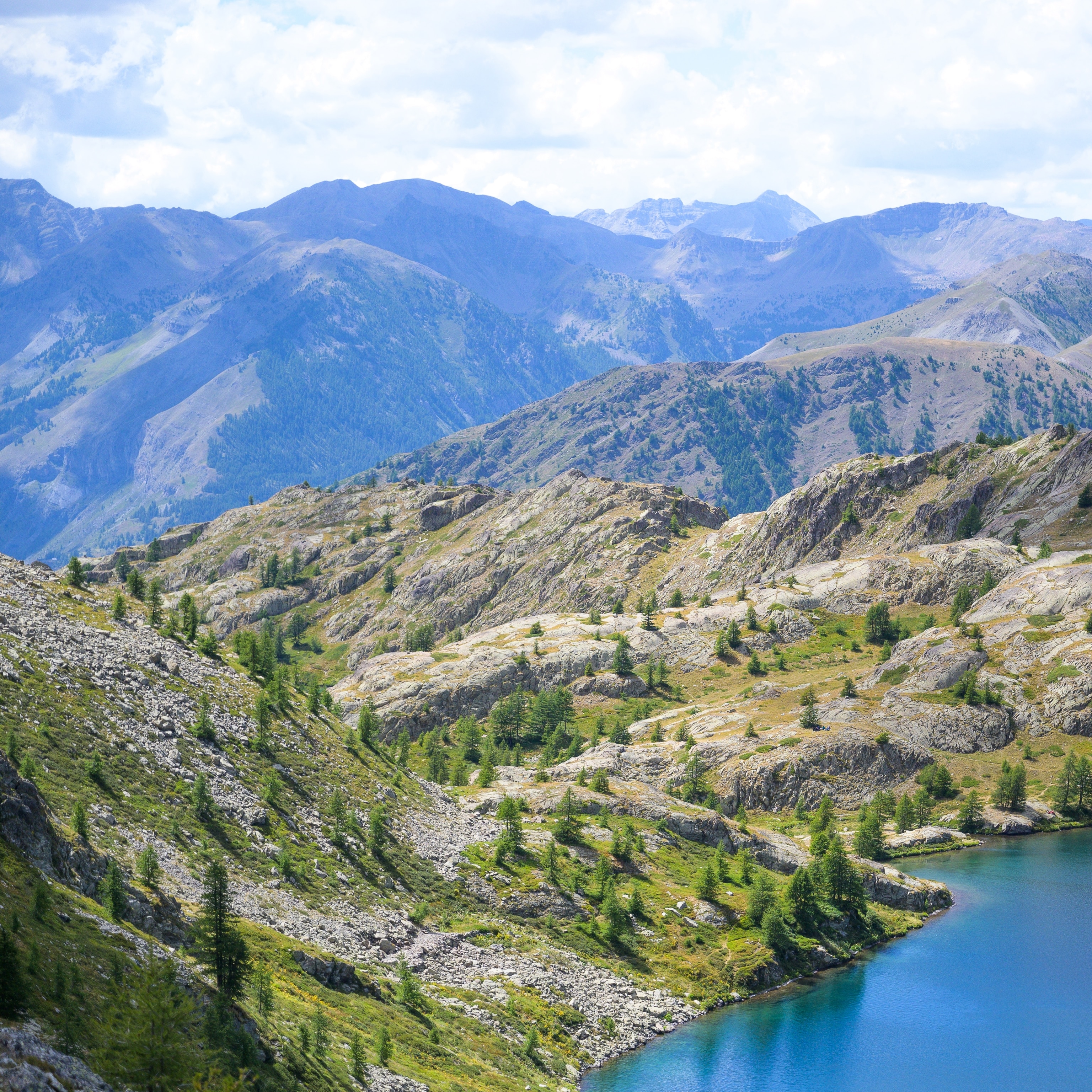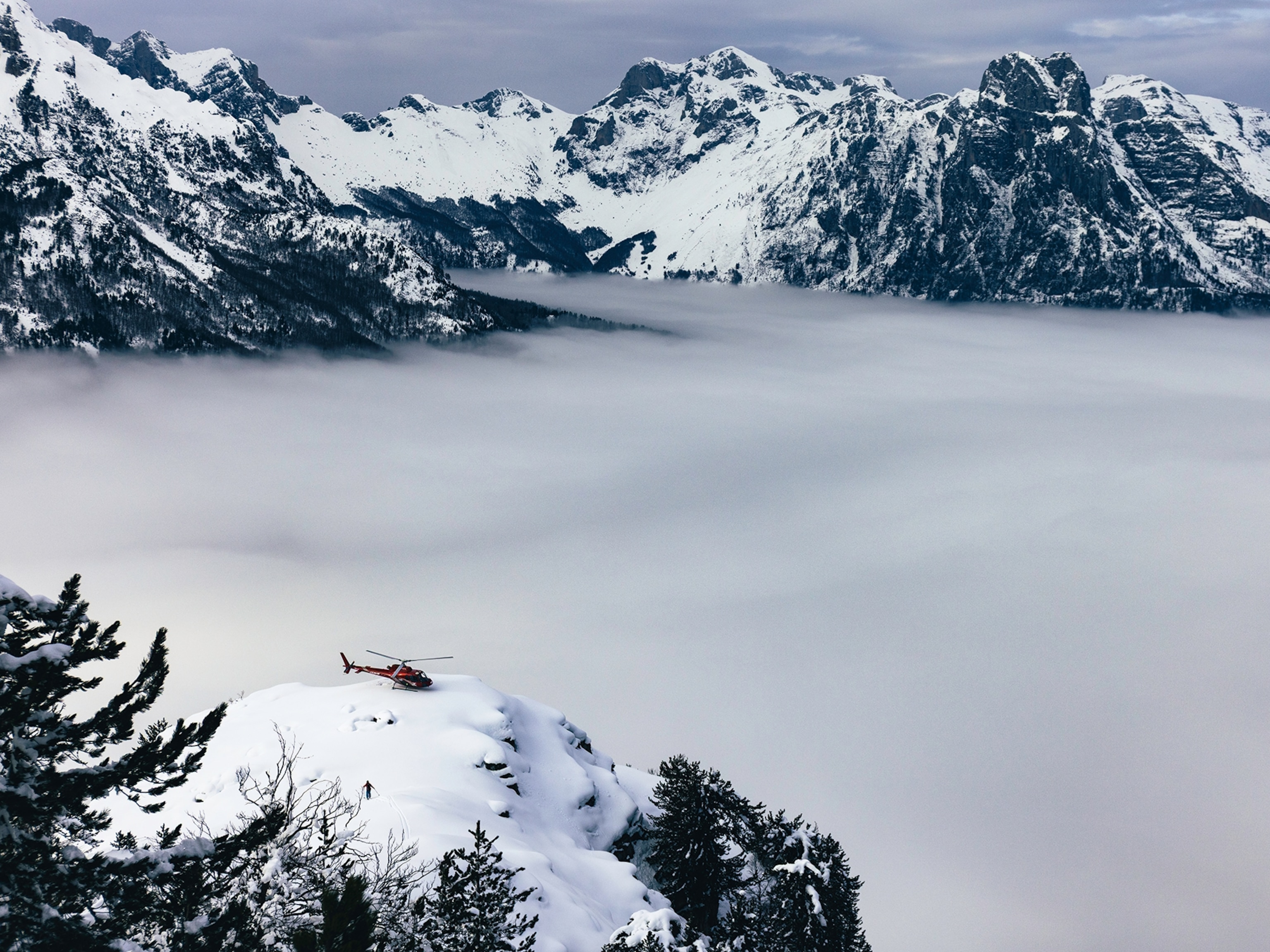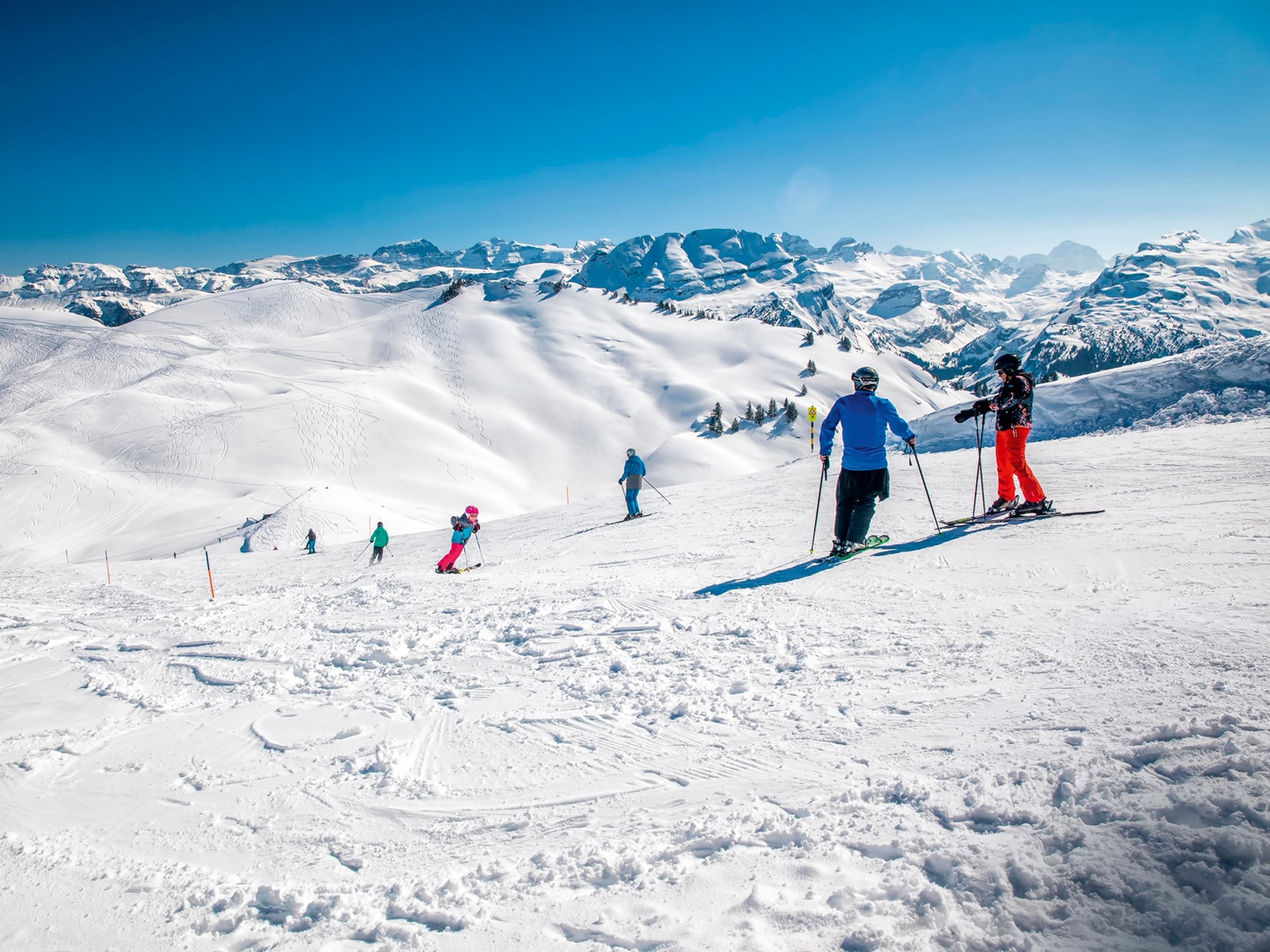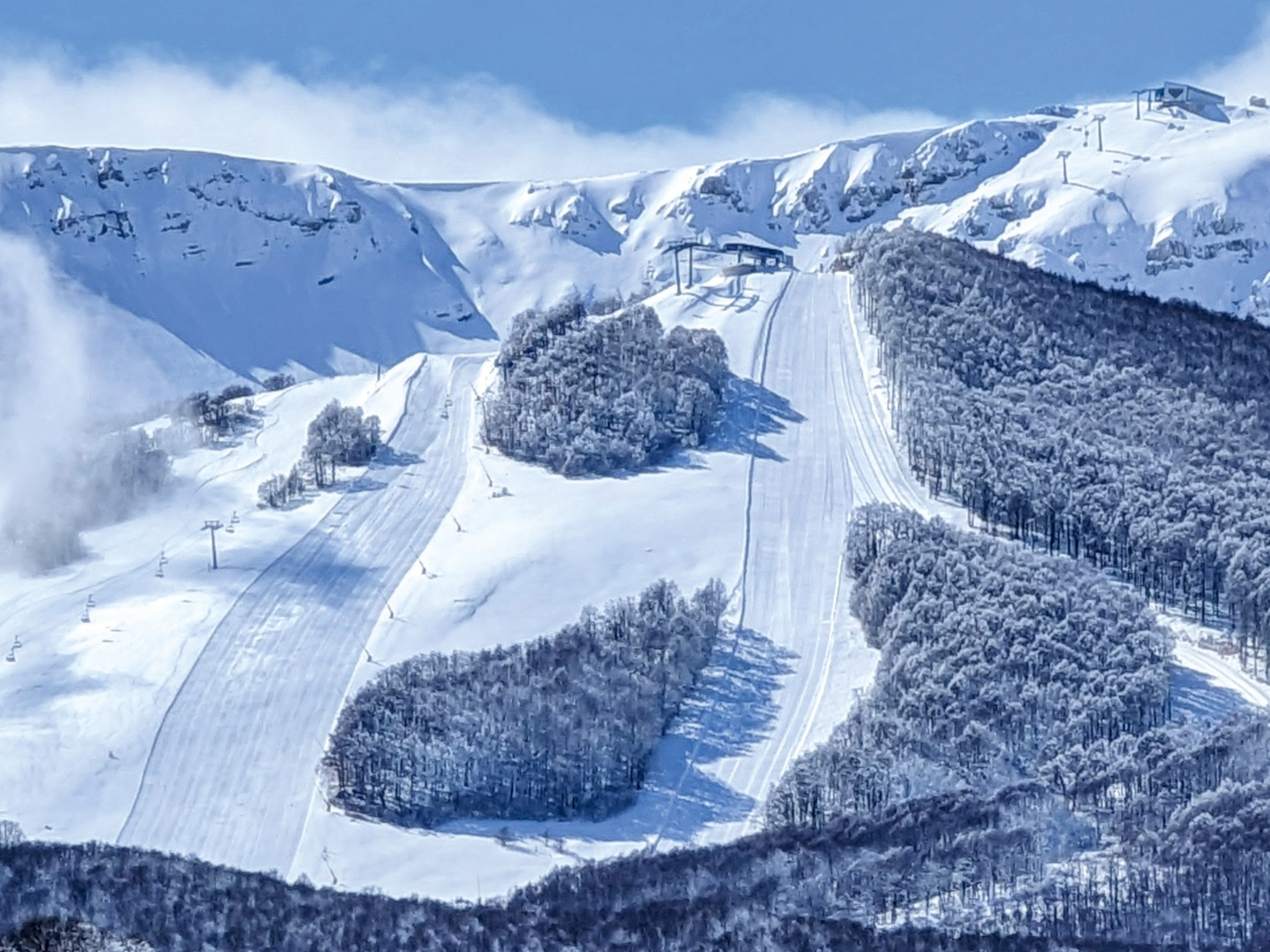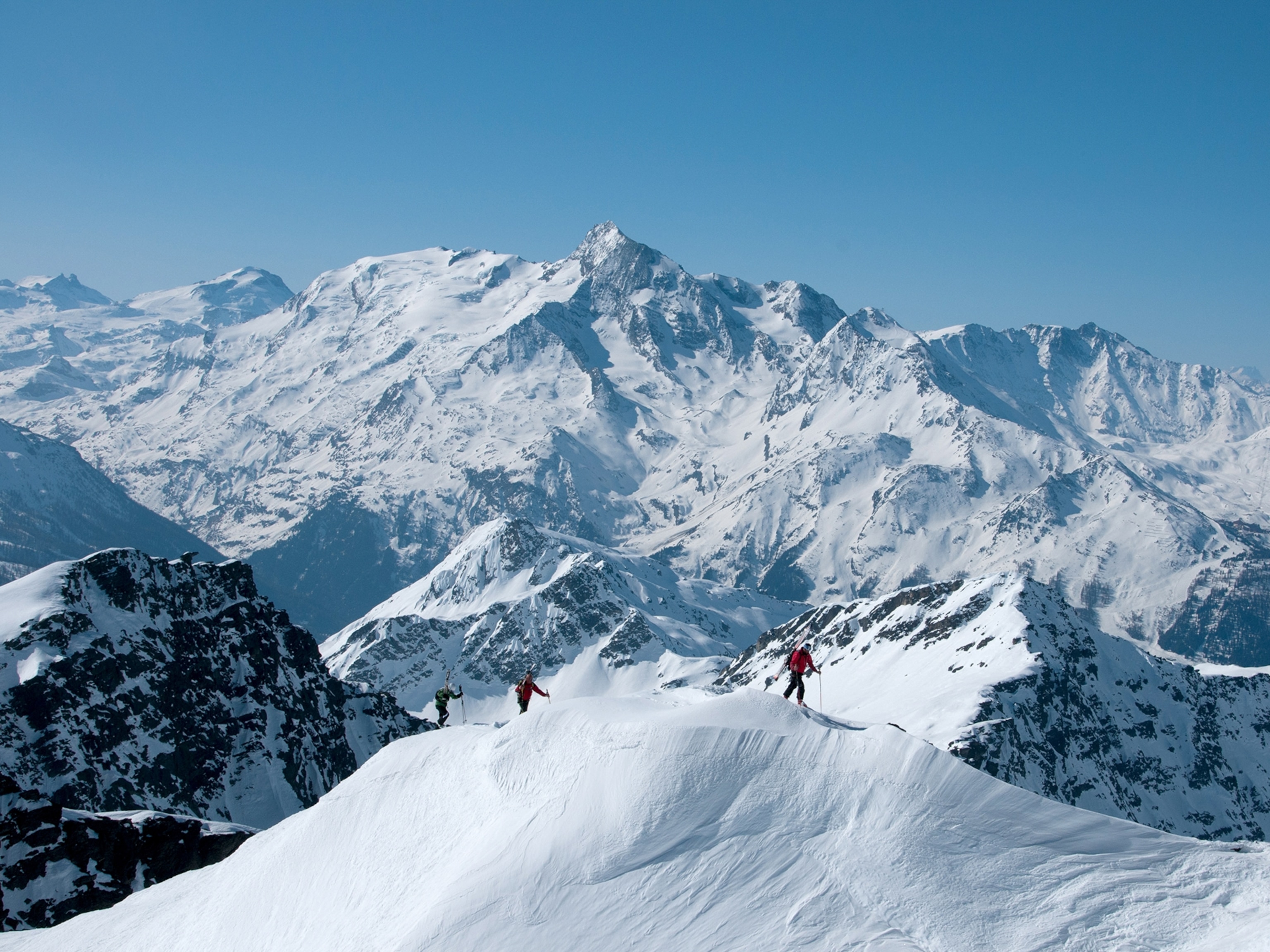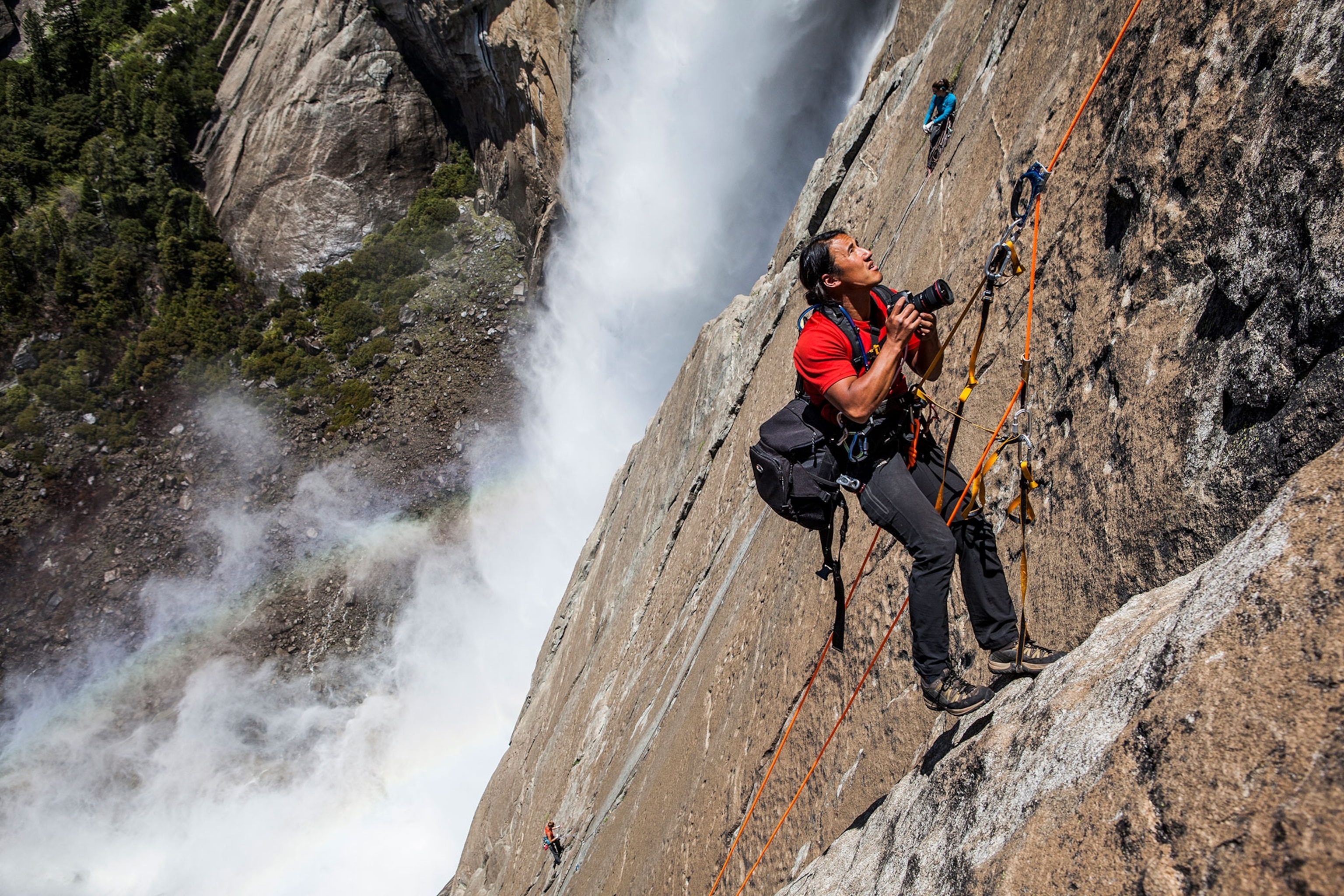
Photographer Jimmy Chin on Mastering the Art of Chill
Here's how the acclaimed climber and skier found his path to adventure storytelling.
During the Communist Revolution, Jimmy Chin’s parents escaped mainland China and fled to Taiwan. Eventually, they immigrated to the flatlands of Mankato, Minnesota, where they built a life working as librarians. It was an unlikely setting to raise a world-class mountaineer.
“I grew up as far away from the adventure world as you can get,” says Chin, 44. “I didn’t grow up climbing and skiing in Estes Park. I grew up reading.”
The precocious Chin, fluent in Chinese and English, started playing violin at age four. He got straight A’s through school, swam competitively, and competed in martial arts. The merits of hard work and humility were recurrent themes in the kung fu stories his father often told him.
“I was told you had to sweep the front door of the Shaolin temple for years before the masters would even look at you,” says Chin. “You had to prove yourself.”
As an undergrad at Carleton College, Chin learned how to rock climb and caught the bug. After graduation, he moved into the back of his car, parked in Yosemite National Park, and became a full-time climbing dirtbag—a term of endearment in the community used to reference climbers who give up other luxuries in dedication to the sport. He did not receive his parents’ blessing.

“As far as they were concerned, I was a homeless person,” says Chin. “And they had just spent their life savings putting me through school—private boarding school, private liberal arts college. They were mortified. That added a lot of extra pressure and doubt.”
One of Chin’s earliest influences was The Hobbit. “I loved the idea of being brave,” he says. “Going on these wild adventures, and doing things you never though were imaginable. It was pretty romantic, but I aspired to these things.”
Courage, adventure, and storytelling became a foundational tripod in Chin’s eventual career as a professional climber, skier, photographer, and filmmaker. Over the past decade, he has enjoyed enormous success both behind and in front of the camera—though the reticent Chin says he prefers to be behind the lens.
In 2006, Chin was a part of the first American ski descent of Mount Everest. In 2011, he and his climbing partners achieved the first ascent of the Shark’s Fin on Mount Meru in the Garwhal Himalaya. He helped produce a highly acclaimed documentary film about this experience, which won multiple awards, including the Audience Award at Sundance in 2015.
“Jimmy works hard and has a natural eye for the camera,” says Brady Robinson, the executive director of the Access Fund and one of Chin’s earliest climbing partners.

Robinson and Chin spent their early 20s climbing together in Yosemite. One time, while bivouacking on the summit of El Capitan, Chin awoke to a glorious sunrise. He saw Robinson’s camera lying atop his pack and snapped a photo of his sleeping partner. Robinson developed the slide and sold the photo for $500, a veritable fortune to a climbing dirtbag. They split the cash, and Chin put his share toward the purchase of his first camera.
“Jimmy has a personal charisma and drive that is very unusual,” Robinson continues. “He is very ambitious, yet he comes across as chill and unassuming. People really love him, want him to be successful, and want to work with him.”
At 23, Chin organized his first international climbing expedition with Robinson. They went to Pakistan’s Karakoram mountains and established a first ascent on a granite spire named Fathi Brakk in the Charakusa Valley. During the ascent, the duo faced falling rocks and ice blocks that nearly crushed them. For Chin, the entire experience—planning the trip, finding funding, climbing a dangerous new route in one of the most remote and rugged mountain ranges in the world, and documenting the adventure with his new camera—was pivotal. The photographs Chin captured appeared on a number of outdoor company catalogs and, as Chin says, “All of a sudden, I was in.”
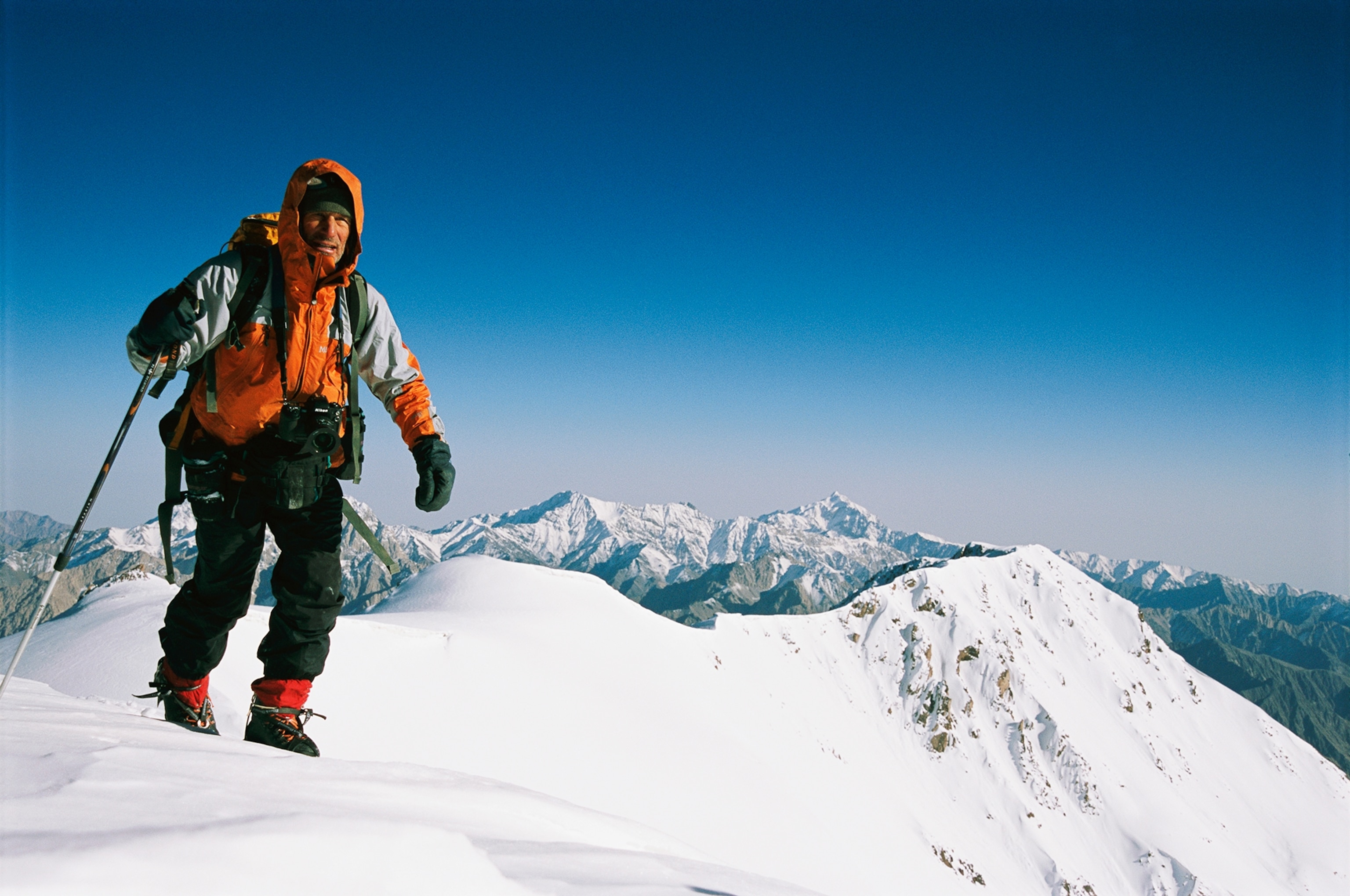
Most importantly, his success caught the attention of mountaineering legend Conrad Anker, who, in 2001, helped Chin get his first professional gig shooting a campaign for The North Face and a coveted athlete sponsorship from the brand.
The following year, Anker invited Chin on to join him, Galen Rowell, and Rick Ridgeway on an unsupported crossing of the remote Chang Tang Plateau in Tibet. The story, which featured Chin’s photographs, appeared in the April 2003 issue of National Geographic magazine. Getting published in National Geographic helped Chin’s parents understand and see the value of their son’s non-traditional path.
“My mom came out to D.C. and saw me do a talk at Grosvenor Auditorium with Conrad and Rick,” says Chin. “The entryway displayed all of our photos and the whole story. It was cool.”
Anker and Chin remain close climbing partners and friends. They recently returned from an expedition to Antarctica’s Queen Maud Land, where they climbed a new route on Ulvetanna, or the “Wolf’s Tooth.”
Sadly, the day before Chin was scheduled to leave for this six-week Antarctic expedition, Chin’s father passed away. Chin nearly bailed, but decided, with a bit of uncertainty, to go. After a month of being in one of the most awesome and outrageous mountain ranges in the world doing exactly what he loves to do with a group of close friends, Chin realized he’d made the right decision. Anker describes the moment Chin took on the summit of Ulvetanna to remember his father as “touching.”
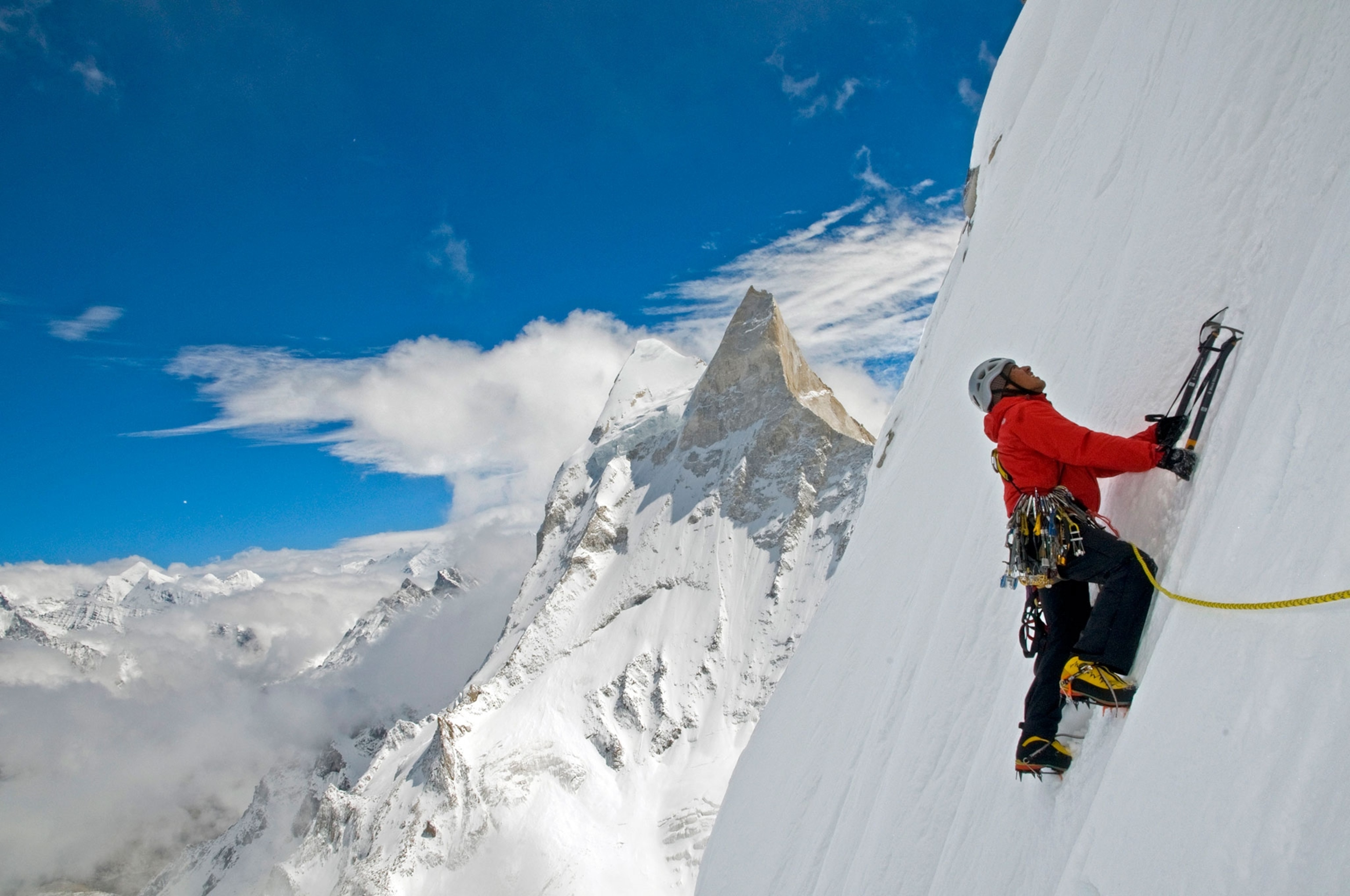
“I thought of him every day in Antarctica,” Chin says. “My mind would drift to moments I shared with him from childhood on the approaches to the climb, while we climbed. Moments I hadn’t thought about in decades.”
Chin splits his time between Jackson Hole and New York City, where his wife, the acclaimed director Elizabeth Chai Vasarhelyi and two young children live. He is currently working on a documentary of Alex Honnold’s groundbreaking free solo of El Capitan in 2017.
National Geographic caught up with Chin to talk storytelling, adventure, and risk.
Has becoming a father affected how you approach decision-making in the mountains?
You know, probably … but not significantly. There’s certainly one more layer to the decisions I make, but I attribute some of that to age as well. When my daughter hit 3.5 years old, it really shifted significantly for me in that I just want to hang out with her and my son all the time. Like, really, really all the time. I’m like, she’s so killer, this is so fun.
How do you define your job?
That’s never been an easy one. I often say I’m a photographer and director. I never say “professional athlete.” I was never that comfortable with that idea.
What’s the balance for you with climbing and skiing?
They’re so different in obvious ways, but they’re also similar. I find a lot of happiness and joy in climbing and skiing. I need them both. They’re my sanity checks. They’re what I do. They’re a great source of motivation. They’re also my favorite way to interact with my friends and community. The heart of who I am is in the climbing and skiing communities.
- National Geographic Expeditions
What role has mentorship played in your success?

I’ve had a lot of incredible mentors. Certainly Conrad Anker has been an incredible mentor and friend. After my first expedition to Pakistan, I met him at a trade show. He came up to me, knew my name, and what I had just climbed. I was so stoked. He got me my first commercial shoot with The North Face, got me on the team, and helped me with my first Nat Geo assignment. That’s how I met Rick Ridgeway, who is still a huge mentor and close friend, and Galen Rowell and David Breashears. Rick introduced me to Yvon Chouinard, and I could fill a book about why Yvon inspires me.
Who is someone younger than you who has inspired you?
Right now, it’s Alex Honnold. When he’s focused, he is so methodical and disciplined.
What themes do you like to focus on as an expedition storyteller?
I’m an optimistic person. I’m someone who likes to call out other people’s strengths. I think there are a lot of meaningful stories that come out of expeditions because they represent the positive sides of humanity. Perseverance. Overcoming challenges. Teamwork. Trust. These are the things I feel and appreciate.
How does your heritage influence you?
I was brought up in an immigrant family. That means you worked hard. If you’re going to bother doing something, you needed to do it really well. It was all about excellence. There weren’t any excuses. I grew up swimming competitively, studying, competing in martial arts, and playing violin.
I learned that there’s no way around hard work and putting in time and practicing.
What advice would you give to someone who wants to follow in your footsteps?
I would try to be encouraging, but I’m a tough-love person. I’ve had a lot of people help me along the way … but I also believe that you don’t find your mentors, they find you. People might not understand that. When people want advice, often times the intention is, “What’s the shortcut? How can I get where you are without putting in the work?” I’d like to think that I was putting in the work and the time, and that’s what Conrad and some of the other mentors I’ve had in my life recognized in me. It all goes back to my father’s kung fu stories. You have to spend years sweeping the front door before the grand masters will let you in.





